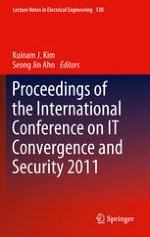2012 | OriginalPaper | Chapter
3. Towards Understanding Deterrence: Information Security Managers’ Perspective
Authors : Sangseo Park, Anthonie B. Ruighaver, Sean B. Maynard, Atif Ahmad
Published in: Proceedings of the International Conference on IT Convergence and Security 2011
Publisher: Springer Netherlands
Activate our intelligent search to find suitable subject content or patents.
Select sections of text to find matching patents with Artificial Intelligence. powered by
Select sections of text to find additional relevant content using AI-assisted search. powered by
